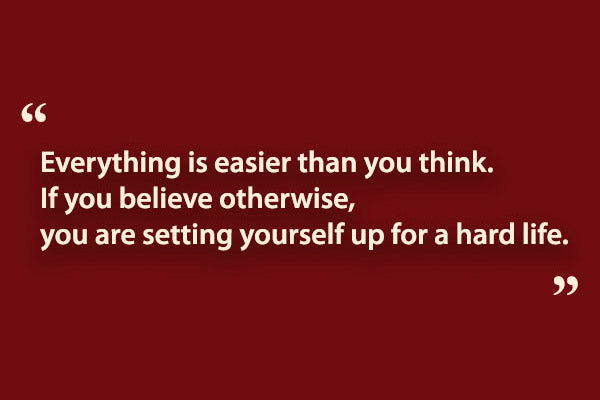Some mistakes are small and irrelevant while some have bigger but yet manageable consequences. There are however some mistakes that can bring your entire training career down. These are often mistakes that you are not aware off, carrying them out habitually. Some trainers realise such mistakes after years of suboptimum training while others don’t understand what is preventing their training courses to be successful.
The first step in combating mistakes is to know what they are. Your awareness of them combined with taking alternative actions will help you avoid damage. The following are 5 mistakes every trainer needs to avoid when providing a training course.
Training Mistake 1: Telling Rather than Asking
Many trainers simply keep talking and talking. Their approach is more like giving a speech rather than engaging delegates about a topic. With this approach you could easily end up talking about subjects that are boring to delegates, irrelevant or simply dull. To avoid this mistake, ask questions to understand how much learners know already and what they think of the subject you just raised. Do they already know the answer, or do they have problems which need to be addressed? Are you going too quickly or too slowly? Are they interested in what you are covering? Without asking questions, you would never know.
Training Mistake 2: Treating Everyone Equally
Some participants attend a course because they don’t know anything about a topic. Others have more experience but would like to improve on their skills by attending training courses. This is particularly the case for soft skills courses as many subjects are related to each other and so you can easily find people who attend these courses one after another. Some trainers make a mistake of treating all delegates as people who don’t know anything about a topic or consider themselves weak. A successful trainer must be able to recognise the needs of both kinds and address them accordingly. A great way to do this is by encouraging participants to engage with each other over exercises and discussions so they can learn from each other. Meanwhile you can help those with some skills with more advanced contents.
Training Mistake 3: Failing to Engage the Wisdom of Learners
Some trainers think that people who attend their course are novices in the domain and as a trainer they know more than anyone else. This attitude usually leads to heated arguments between trainer and learners, each defending their view about a topic. Naturally, this will significantly reduce the effectiveness of a course. Learners usually have experience with what works and what does not, they have tried a variety of methods at work and are now here to understand the topic better and learn systematically. Some of the suggestions and solutions offered by some learners can be extremely useful for other delegates and even the trainer. A good trainer must recognise other people’s inputs and capabilities and create a positive learning environment where everyone can contribute, be heard and expect to be guided.
Training Mistake 4: Failing to Change
Some trainers are enthusiastic when they start training a new course. Years pass and they still keep providing the same course over and over again. In today’s ever changing world, new methods on training and learning are discovered and advocated all the time. Good trainers must keep an eye on these new findings and update their courses accordingly. For example, you may have to stop telling that old story over and over again, because either everybody knows it or the world has moved on and the story is not relevant anymore. Inject something new in your courses to keep them fresh and interesting.
Training Mistake 5: Failing to Put Yourself in Place of Your Learners
Some trainers don’t see or care what their learners go through. They go over the content with a fixed pace and expect the learners to adjust to that. The best way to know what learners are going through is to visualise yourself in their place as you go through the course. Is this the first time a learner is exposed to this information? How much effort is required to understand the concept? How long did it take you to understand it when you were introduced to it years ago? This helps you to remain patient with delegates as they progress. Is the learning environment suitable? Is it quiet or noisy? Is it hot or cold? Is it spacious or confined? Is it lit or dark? Does it encourage creative thinking? Is it dull or distracting? Can delegates engage with each other easily? Are the sitting arrangements suitable?
Simple awareness of these mistakes will help you to become a better trainer. So monitor yourself every time you deliver a course to make sure you avoid these. If you know of other mistakes that affects the quality and efficiency of training, let other trainers know by sharing your comments below.
Comments
By Carmel Jagdiesh @ Friday, February 10, 2012 10:39 AM
The information is useful and easy to understand.
By Alice @ Wednesday, November 20, 2019 6:25 PM
Speak loudly so everyone can hear you and make sure they can understand you. If you have a presentation make sure the projector is focused and sit in the back row to make sure you can read the board
Soft Skills Training Materials
Get downloadable training materials
Online Train the Trainer Course:
Core Skills
Learn How to Become the Best Trainer in Your Field
All Tags
Training Resources for You

Course Design Strategy
Available as paperback and ebook

Free Training Resources
Download a free comprehensive training package including training guidelines, soft skills training activities, assessment forms and useful training resources that you can use to enhance your courses.

Our Comprehensive Guide to Body Language

Train the Trainer Resources
Get Insights - Read Guides and Books - Attend Courses
Training Materials
Get downloadable training materials on: Management Training, Personal Development, Interpersonal Development, Human Resources, and Sales & Marketing














Leave a comment
All comments are moderated before being published.
This site is protected by hCaptcha and the hCaptcha Privacy Policy and Terms of Service apply.